In football, injuries are as inevitable as death and taxes.
Attrition affects every team. Ask any coach, any player, anyone who closely covers or watches the game, quality depth throughout your roster is critical to sustained success – over the course of a season, over the course of a coaching tenure.
For Oregon, the 2016 and 2017 seasons were largely marred due to a lack of depth. The 2016 season saw the entire defense deal with significant injuries, while in 2017, a promising start to the year was upended by the broken collarbone suffered by quarterback Justin Herbert five weeks in.
With a healthy Herbert set to return, and coming off an offseason filled with tremendous optimism, the Ducks enter the 2018 season as a team with arguably as much potential upside of any in the entire country. However, while overall team depth is improving, there is valid concern that it’s not quite where it needs to be in order for the Ducks to be considered a legitimate contender for the Pac-12 Championship.
Below we assess the depth of the Oregon offense; a group that got off to a torrid start in 2o17 under the guidance of Herbert, but became anemic once Herbert was sidelined for five games. To gage where the Ducks are at depth wise, we’ll use the number 24 as the benchmark in terms of the number of players an offense needs in order to play at a relatively high level week-in and week-out. We’ll also break the Ducks’ depth down into four tiers: guys who have done it, guys we’re optimistic can do it (at least occasionally), guys we need to see prove it, and guys we know next to nothing about.
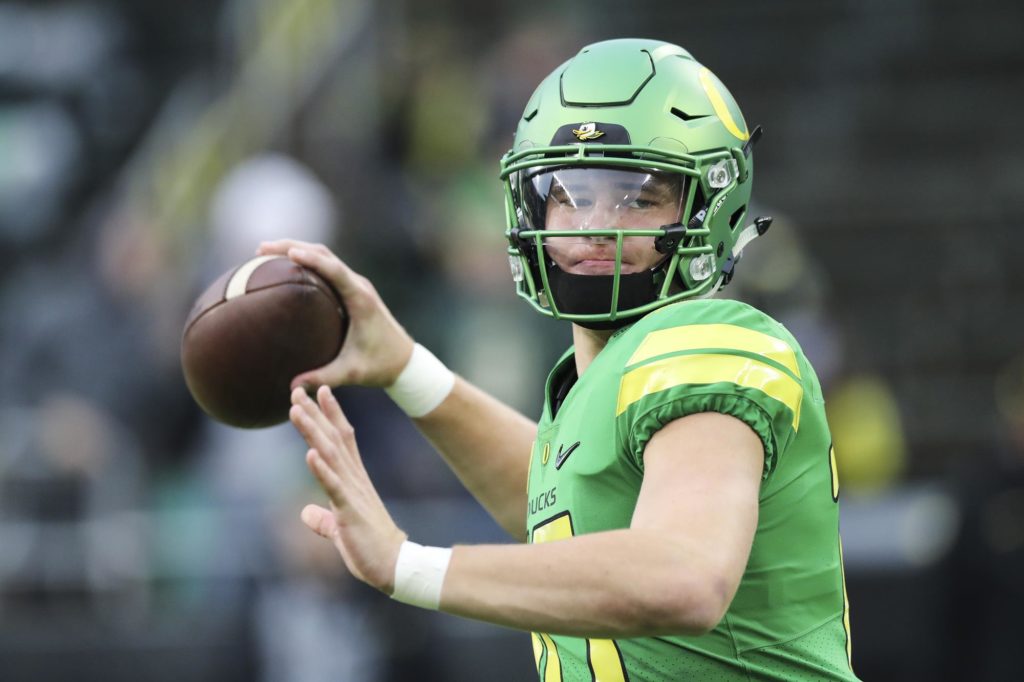
Guys who have done it: (8)
QB Justin Herbert (Jr.)
RB Tony Brooks-James (RSr.)
WR Tabari Hines (Sr.)
WR Dillon Mitchell (Jr.)
OL Shane Lemieux (RJr.)
OL Jake Hanson (RJr.)
OL Calvin Throckmorton (RJr.)
OL Brady Aiello (RJr.)
There’s good news and not-so-good news for the Ducks on offense. The good news is that the strength of this unit is at quarterback and offensive line – two positions that are as vital as any to the overall success of a team. That bad news is, there’s not much proven talent beyond those positions. Herbert is a legit Heisman Trophy candidate and could be the No. 1 overall player taken in next year’s draft. The offensive line is spearheaded by the veteran trio of Hanson, Throckmorton, and Lemieux – three players who have two full seasons of starting experience – plus Aiello, who has been a spot starter over the past couple seasons while appearing in 21 career games. Brooks-James has been an all-purpose dynamo for the Ducks the past three seasons, but will look to cap off his career as Oregon’s go-to ground gainer. Mitchell and Hines have both proven they can produce at a consistently high level at wideout, and will likely be go-to targets for Herbert in the passing game in 2018. In total, these are solid building blocks, but the overall quality of the skilled positions leaves a little to be desired, at least by traditional Oregon standards.
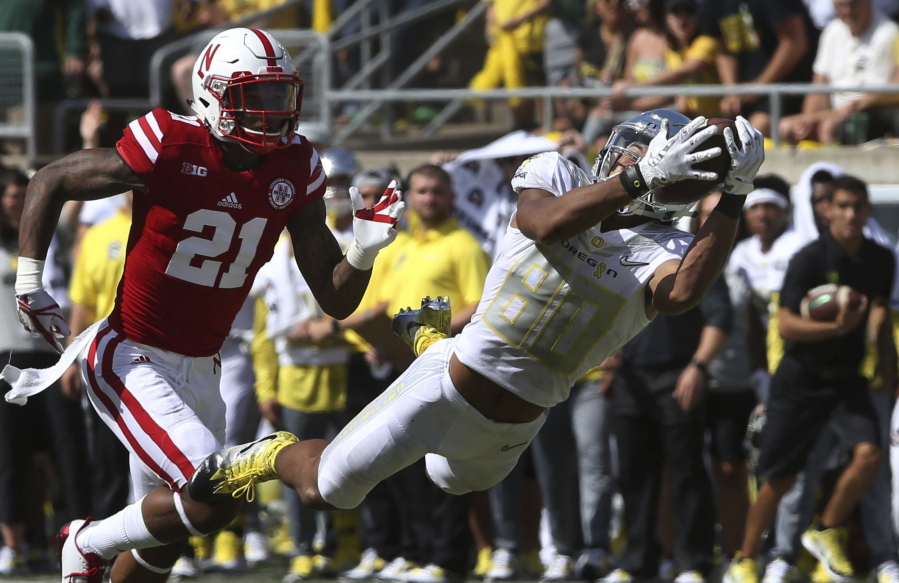
Guys we’re optimistic can do it: (8)
WR Johnny Johnson (So.)
WR Jaylon Redd (So.)
WR Brenden Schooler (Jr.)
TE Jacob Breeland (RJr.)
OL Penei Sewell (Fr.)
OL Dallas Warmack (RJr.)
OL Alex Forsyth (RFr.)
OL Jacob Capra (RSo.)
Once again, the offensive line is well represented here, which should inspire even more confidence in their general ability to be a major area of strength for this team. Sewell and Warmack have reportedly been running with the first team offense over the past several practices, while Forsyth and Capra are fringe starters who will likely serve as key rotational reserves this season. Of the four linemen in this group, Sewell – the true freshman – has floored teammates and coaches with his tremendous ability, and could easily emerge as a star as early as this season. The contingent of pass catchers in this group is also encouraging, as Johnson, Redd, Schooler, and Breeland have all flashed tantalizing potential at various points. Of all the players listed in this group, those four will be counted upon the most to take that next step.
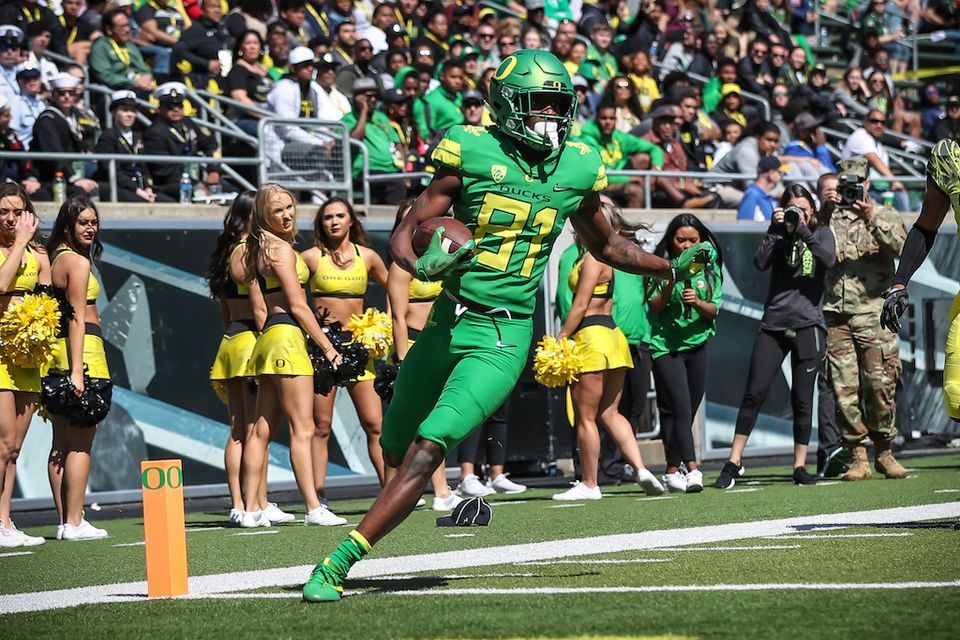
Guys we need to see prove it: (17)
QB Braxton Burmeister (So.)
QB Tyler Shough (Fr.)
RB CJ Verdell (RFr.)
RB Taj Griffin (Sr.)
RB Darrian Felix (So.)
RB Cyrus Habibi-Likio (RFr.)
RB Travis Dye (Fr.)
WR Daewood Davis (RFr.)
WR Bryan Addison (Fr.)
WR Demetri Burch (RFr.)
WR Isaah Crocker (Fr.)
TE Cam McCormick (RSo.)
TE Ryan Bay (RJr.)
TE Kano Dillon (Sr.)
TE Spencer Webb (Fr.)
OL George Moore (Jr.)
OL Steven Jones (Fr.)
OL Dawson Jaramillo (Fr.)
With only 16 players slotted in the top two tiers of this exercise, it’s clear that the Ducks will need roughly half of the players from Tier 3 to elevate their games to a reliable level if this offense is to match the output of last year’s team with a healthy Herbert running the show. The running backs, wide receivers, and tight ends in the group will need to be particularly impactful, as these are the positions where the Ducks lack the most proven talent on offense. At running back, Verdell and Felix were thought to be two up and comers, though neither has been able to get on track thanks to nagging injuries persisting over the better part of fall camp. Habibi-Likio, Griffin, and Dye have picked up the slack in their stead, though none of the three has really been able to create separation. Out wide, Davis, Addison, Burch, and Crocker are intriguing talents with tons of upside, but overcoming their youth to become consistent performers over long stretches has been the biggest hurdle for the group to clear. At tight end, McCormick has been running with the first team offense for virtually all of fall camp, but has seen limited action throughout his collegiate career. Bay is another player with spotty experience who will need to fend off newcomers in Dillon and Webb in order to remain firmly in the mix for playing time. Along the offensive line, Moore is a physical specimen that has yet to put it all together, while Jones and Jaramillo are two versatile young players who will likely see the field sparingly this season.
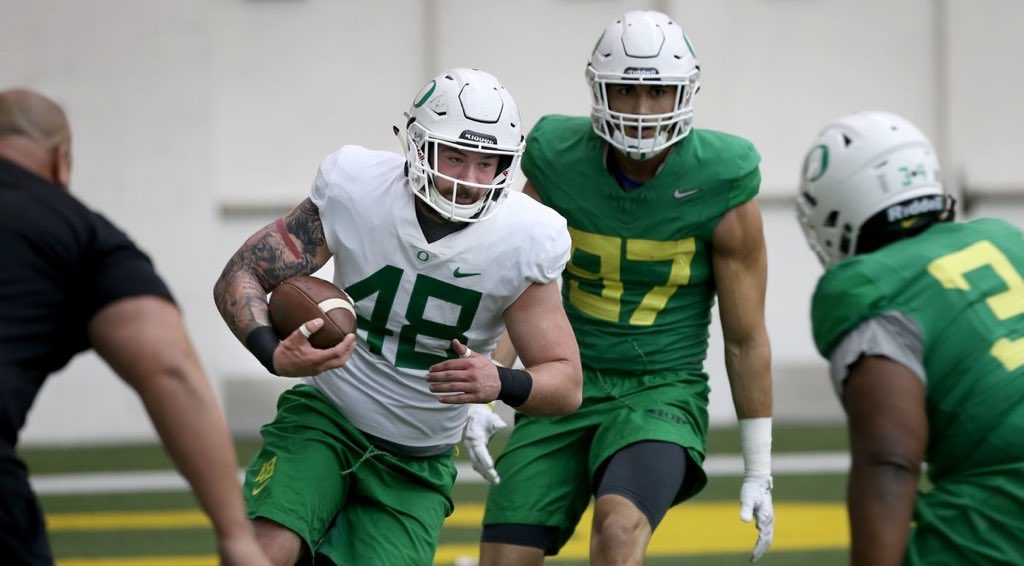
Guys we know next to nothing about: (6)
WR JJ Tucker (Fr.)
TE Hunter Kampmoyer (RSo.)
OL Justin Johnson (Fr.)
OL Sam Poutasi (RSo.)
OL Cody Shear (RFr.)
OL Chris Randazzo (Fr.)
Much like the defensive version of this group, this is a collection of largely developmental players who are expected to see little to no action this season. Tucker, Johnson, and Randazzo feel like the most likely redshirt candidates of the freshmen on offense.
The Final Verdict:
For the first time in recent memory, the Oregon offense feels like it’s a step behind where the defense currently is in terms of proven talent. The great equalizer, however, is the presence of arguably the nation’s most talented quarterback in Justin Herbert, along with an offensive line that is as big and deep as any in college football this season. With those two elements in place, the Ducks have greater margin for error than most teams should their skill talent be slow to round into consistent and effective form. The fact we’ve identified 17 players as players who need to “prove it” can be a good or bad thing depending on if you’re a glass half-full/half-empty kind of guy/gal. On one hand, there are no shortage of players at your disposal who could rise to occasion and become valuable contributors this season. On the other, it’s a lot of question marks and unknowns to rely upon if the goal is to compete and win a conference title this season.
Do the Ducks have enough defensive depth to be championship caliber?

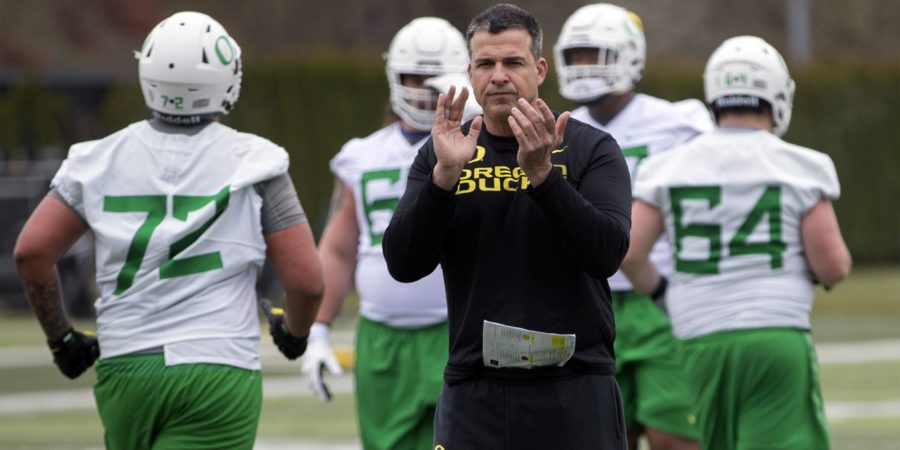
I’m curious why you put Breeland in the “optimistic “ category….he was pretty productive last year…other than him though I think this is a good analysis. I also think that while Hines has done it for another team, we need to see him do it for the Ducks. We’ve seen graduate transfers before flop a bit.
Thanks for the question!
My reasoning behind putting Breeland in the “optimistic” category has a lot to do with the fact that he battled injury throughout last year and into the offseason, which has allowed other challengers at the position (namely Cam McCormick) to overtake him as the sole starter at tight end. If healthy, I expect Breeland to be primary contributor in the passing game, but that really doesn’t feel guaranteed considering some of his lingering health concerns.
I think there’s an argument to made there for Hines, too. However, when you look at the body of work over his career, it suggests to me that he’s as much of a sure thing as anyone on offense for Oregon (excluding Herbert). Back-to-back seasons as Wake’s team leader in receptions puts him over the top for me.